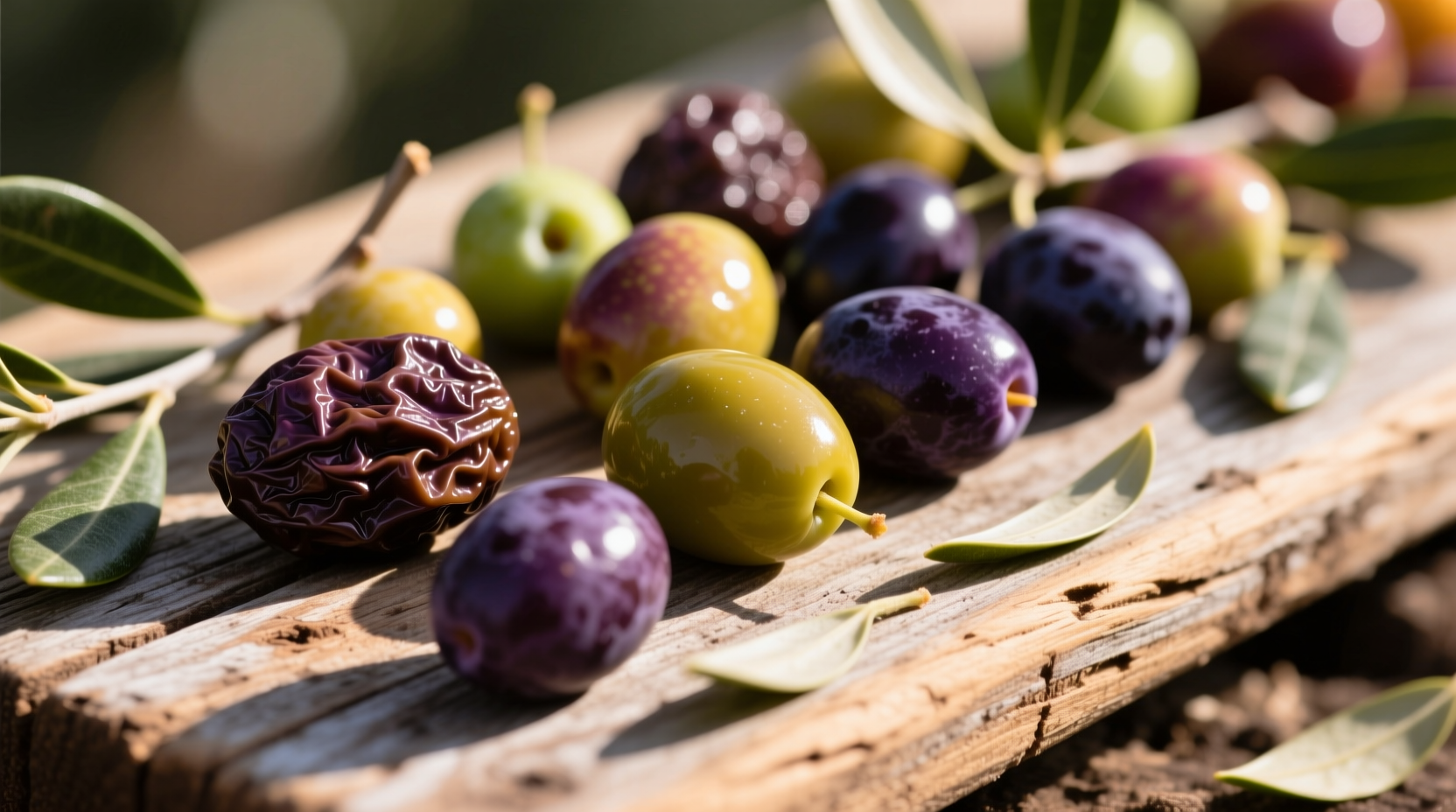If you've ever wondered what do olives taste like, here's the direct answer: Fresh olives straight from the tree are intensely bitter due to oleuropein, but processed olives offer a complex profile ranging from mild and buttery to rich and fruity with underlying saltiness. Green olives tend to be firmer and more bitter, while black olives are softer and fruitier. The curing method dramatically transforms their flavor, creating the distinctive taste we recognize in Mediterranean cuisine.
As a chef who's spent years exploring European flavor traditions, I've developed a nuanced understanding of how olives express themselves on the palate. Understanding olive taste isn't just about describing flavors—it's about recognizing how centuries of cultivation and processing have transformed a naturally inedible fruit into one of the Mediterranean's most cherished ingredients.
The Fundamental Taste Profile of Processed Olives
When you bite into a typical store-bought olive, you'll experience several distinct flavor elements working together. The initial sensation is often saltiness from the curing process, followed by a subtle fruitiness reminiscent of fresh-cut grass or ripe stone fruit. Underneath these notes lies a characteristic bitterness that, when balanced properly, adds complexity rather than unpleasantness.
According to research from the International Olive Council, the specific taste profile depends on multiple factors including variety, ripeness at harvest, and processing method. This explains why your experience with Kalamata olives differs significantly from Castelvetrano varieties.

Why Fresh Olives Are Inedibly Bitter (And How Processing Changes Everything)
Most people don't realize that olives plucked directly from the tree contain high levels of oleuropein—a phenolic compound that makes them intensely bitter and unpalatable. This natural defense mechanism protects the fruit from being eaten before the seeds are mature.
| Processing Method | Time Required | Flavor Characteristics | Texture Profile |
|---|---|---|---|
| Traditional Brine Curing | 6-12 months | Complex, balanced saltiness with pronounced fruit notes | Firm yet yielding |
| California-Style (Lye) Curing | Days to weeks | Milder, less complex, sometimes slightly soapy notes | Softer, sometimes mushy |
| Oil Curing | 4-6 weeks | Rich, concentrated fruitiness with subtle salt notes | Meaty, dense |
| Dry Salt Curing | 4-6 weeks | Intensely savory with concentrated olive flavor | Shriveled, chewy |
The transformation timeline reveals how processing breaks down oleuropein while developing new flavor compounds through fermentation. Traditional methods that take months produce more complex flavor profiles compared to accelerated techniques. This evolution explains why artisanal olives often command premium prices—they've developed nuanced flavors that quick processing simply can't replicate.
Green vs Black Olives: Understanding the Flavor Differences
The color difference between green and black olives isn't just cosmetic—it signals fundamental flavor variations. Green olives are harvested before full ripeness, resulting in:
- Higher natural bitterness
- Firmer, crunchier texture
- Grassy, herbal flavor notes
- More pronounced salt perception
Black olives, allowed to ripen fully on the tree, offer:
- Milder bitterness with richer fruit notes
- Softer, meatier texture
- Notes of ripe plum or fig
- More subtle salt integration
It's important to note that not all black olives you find in stores are tree-ripened. Many "black" olives undergo oxidation treatment to darken their color while still being harvested green—a practice documented by the UC Davis Olive Center that affects both flavor and nutritional profile.
Regional Varieties and Their Distinct Flavor Signatures
Mediterranean regions have developed distinctive olive varieties suited to their local conditions, each with characteristic flavor profiles:
Greek Kalamata: These almond-shaped olives offer a complex balance of fruity richness with wine-like notes and moderate saltiness. Their deep purple color indicates full ripeness, contributing to their distinctive flavor.
Spanish Manzanilla: The most commonly canned green olive features a mild bitterness with grassy notes and a crisp texture that makes them ideal for stuffing with pimientos.
Italian Gaeta: Small and deeply colored, these olives deliver an intense, complex flavor with notes of herbs and a pleasantly bitter finish that enhances pasta dishes.
California Mission: Often used for oil production, these olives when cured offer a mild, buttery flavor that's less complex than Mediterranean varieties due to different processing standards.
Understanding these regional differences helps explain why certain olives work better in specific culinary applications—a crucial consideration for home cooks wanting authentic Mediterranean flavors.
How Olive Flavor Transforms in Cooking
When incorporating olives into cooked dishes, their flavor profile changes significantly. Heat causes the fats in olives to release, distributing their flavor throughout the dish while mellowing their inherent bitterness. This transformation follows specific patterns:
- Room temperature applications: Olives retain their distinct individual character in salads and antipasti
- Light cooking: Brief exposure to heat (as in pasta puttanesca) preserves texture while allowing flavors to meld
- Extended cooking: In stews and braises, olives break down, contributing their essence to the entire dish
Professional chefs recognize that different olive varieties serve distinct purposes in cooking. As noted in culinary research from the UC Davis Olive Center, robust varieties like Kalamata hold up well in cooked dishes, while delicate varieties like Cerignola are best used raw where their subtle flavors won't be overwhelmed.
Practical Guidance for Selecting and Using Olives
Understanding olive taste profiles translates directly to better culinary decisions. Consider these practical applications:
For salads and antipasti platters, choose milder varieties like Castelvetrano that won't overpower other ingredients. Their buttery flavor and vibrant green color create visual and flavor appeal without dominating the dish.
When making pasta sauces or braises, opt for more robust varieties like Kalamata or Gaeta that can withstand cooking while contributing complex flavors. Their stronger personality holds up against tomatoes and other bold ingredients.
For tapenade or olive spreads, combine different varieties to create layered flavor profiles. A blend of mild and robust olives creates depth that single-variety preparations often lack.
Remember that the brine matters too—olives packed in high-quality olive oil rather than water-based brines typically offer superior flavor integration in cooked dishes. This practical insight comes from years of sensory testing in professional kitchens across Europe.











 浙公网安备
33010002000092号
浙公网安备
33010002000092号 浙B2-20120091-4
浙B2-20120091-4